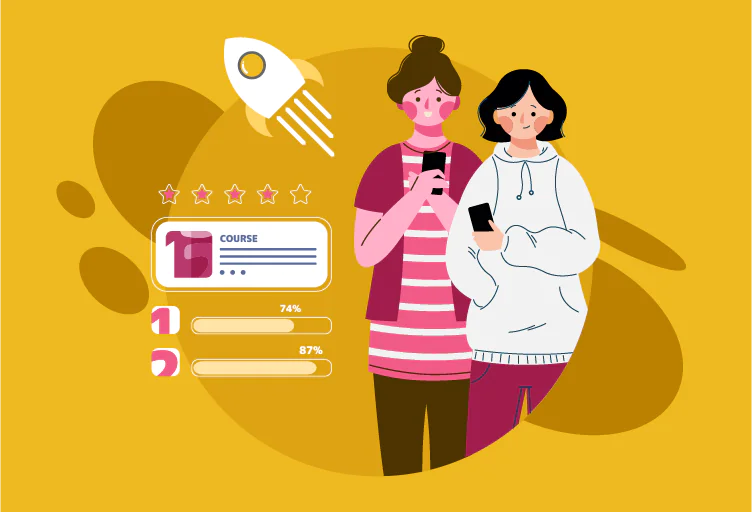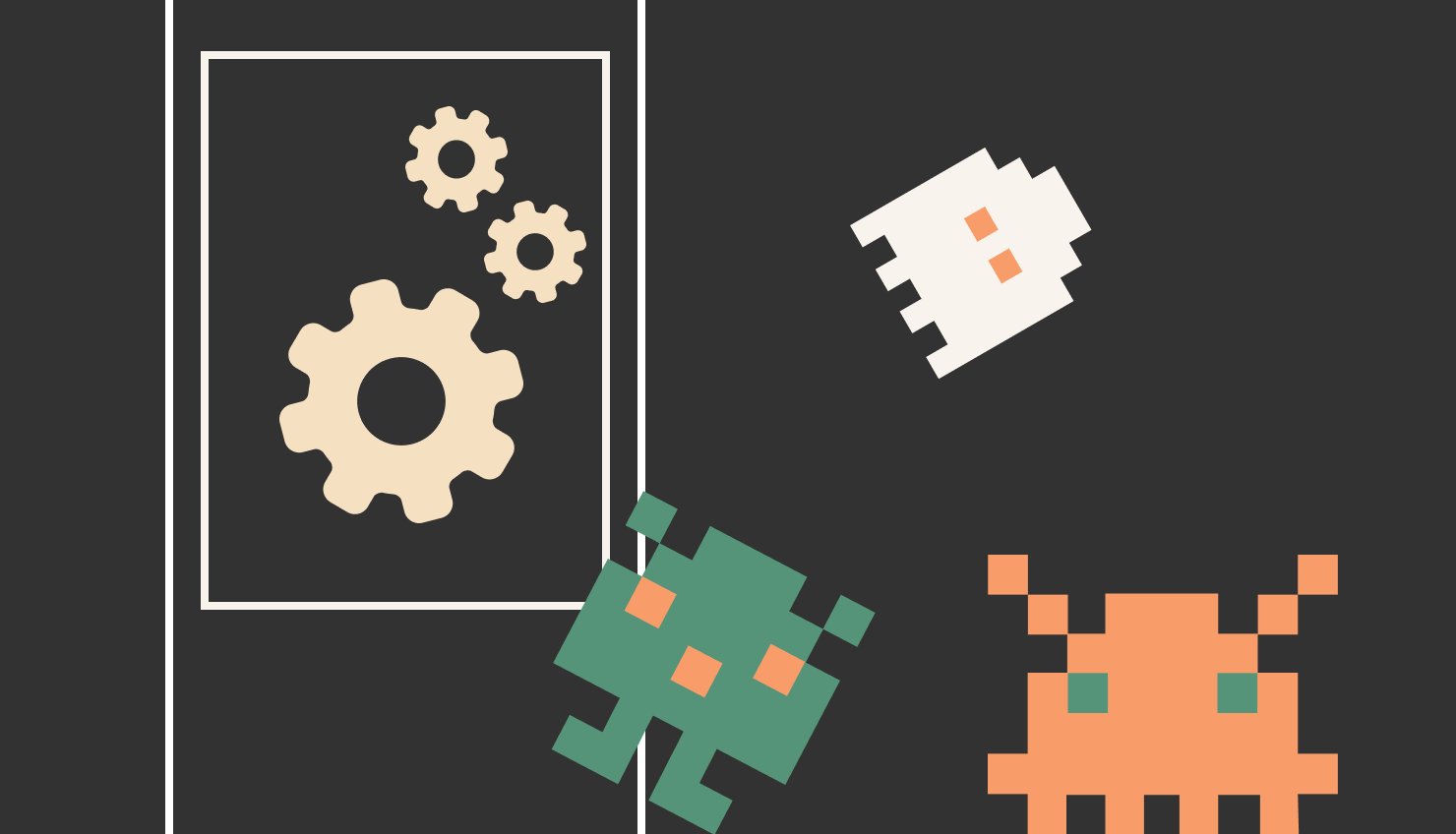Each microlearning content focuses on a specific learning outcome by breaking the modules into several smaller ones. It is just like breaking down a single topic into several sub-topics and discussing them.
It may sound like a novel concept but microlearning has been here for a while now. In fact, this learning strategy is becoming popular and being rapidly adopted across the world in both education and corporate training sectors. Trainers widely use it for corporate training sessions conducted for employee induction, compliance, and skill development.
However, this popularity does not mean creators introduced this concept at once. Microlearning has evolved over a number of years, and its introduction has a vast history. Surprisingly, educators introduced microlearning even before the introduction of desktop computers.
Today, learners and educators carry out this bite-sized learning program via platforms that resemble a combination of Instagram and Twitter but are suitable for education.
What Makes Microlearning Different
Just like other forms of eLearning, microlearning appears to be a little broad. This breadth, in fact, makes it a more flexible and easy method for learning. Different people define and name it differently based on how they utilize this idea. However, the following characteristics define all these learning approaches based on microlearning.
Characteristics of Microlearning
Regardless of how you incorporate it into an existing structured learning plan or implement it informally, these four characteristics of microlearning are always present:
-
Conciseness or Brevity. This means microlearning events are short, although creators often don’t define the duration. Microlearning conducts all activities in short time bursts.
-
Granularity. Due to shortness and purposefulness, microlearning is a rather narrow learning approach that focuses on topics and ideas that are not vast.
-
Variety. Microlearning supports the use of diversified strategies to promote learning. These normally include book chapters, discussions, quizzes, games, videos, presentations, and other modes that learners find effective.
-
Effort. Microlearning requires a little extra effort from the learners. Since the lessons and activities are shorter than usual learning approaches, learners have to be extra vigilant, zealous, and active in order to be able to learn and make the most of these sessions.
These four characteristics make microlearning different from other learning strategies. They make this learning concept a perfect match for mobile learners, but that does not mean microlearning has to be confined to digital gadgets.
Examples of Microlearning Content
Common content ideas based on microlearning include the following:
- Short phrases, paragraphs, or other sorts of written content that is not lengthy
- Graphs, pictures, and illustrations
- Short videos, animations, and clips
- Snippets of speeches, music, or other audio
- Quizzes and exams
- Simple on-screen games
- Online tutorials
- Flashcards
- Mini-quizzes
- Sharing tiny bits of information through email, SMS, etc.
It is important to mention here that some microlearning apps don’t support all kinds of content mentioned in the list above. You must confirm the same with the seller from whom you buy microlearning devices.
Nonetheless, in today’s world, where everyone juggles a plethora of things and wears several hats every day, microlearning is nothing short of the ‘perfect’ learning model that learners need.
Notable Features of Microlearning
Although microlearning is famous as a learning approach with smaller learning modules and preciseness, there is a lot more to it that many don’t know about.
Here are some useful features of microlearning that make it a perfect learning tool for those in the corporate world.
It Caters to One Learning Objective at a Time
The best part about microlearning is that it caters to a single learning objective at a time. Learning objectives determine how a module will help learners and the outcomes of learning about a particular thing. This is the exact opposite of what eLearning allows, i.e., associating multiple learning objectives with all topics/modules.
The benefit of this feature of microlearning is that it ensures that the learners get enough time to fully comprehend what they have been taught. This implies a better understanding and a greater information retention rate.
It Is Focused On Information that Learners ‘Need to Know’
There are two types of information that training sessions include. These are:
- Need to Know
- Nice to Know
‘Nice to know’ is the type of information that is interesting but not necessary to obtain, while ‘need to know’ is the type that is relevant, important to know, and shouldn’t be missed.
In contrast to eLearning, which conveys both sorts of information, microlearning is more precise and focused on information that the learners ‘need to know.’
This means there are fewer chances for the learners to get confused between what is important and what is not. It also saves time and effort for both educators and learners.
It Comes in Handy
You don’t have to always stick to your computer to get your hands on a training module based on microlearning. Learners can use handy gadgets like smartphones, digital notebooks, and tablets to access these lessons and learn, irrespective of time and location.
Adding further convenience for the learner is the fact that microlearning modules are shorter; this means they are easy to download and to navigate.
It Benefits Those With Short Attention Spans
Microlearning is so precise that it barely takes 8 to 10 minutes to move past an entire module. This is chiefly because microlearning modules mostly comprise content that is based on interactive documents, infographics, interactive videos, and audio that one can quickly run and learn through.
This feature is especially beneficial for those who have a problem with retaining attention for long periods. They can easily learn from this crisp, structured, and effective style of learning without having to push themselves to focus.
As for educators or trainers, they can be at peace knowing they don’t have to rush through lessons or push learners with a short attention span to be observant.
It Has Diversified Learning Formats
While microlearning modules can sometimes be based on text and resemble conventional eLearning courses, they mostly consist of content in diversified learning formats. These can include videos, audio, podcasts, pictures, interactive documents, infographics, quizzes, games, animations, and whiteboard activities.
This feature helps to increase learners’ engagement and attention span, generate interest, and reduce the monotony of training programs.
It Can be Applied at all Levels of Learning
Regardless of whether you use microlearning as a standalone learning technique or introduce it into an existing mechanism, you can apply it at all three levels of learning.
- Pre-Training
Conduct a test prior to the commencement of a formal training program. This will enable you to determine how knowledgeable the learners already are. During this step, you can also easily inform them of what they can expect from training modules.
- Training
Share information during training sessions. Give examples, discuss similar references and situations, and implement activities that promote learning.
- Post-Training
This is the last step where educators should reiterate and reinforce the key takeaways from their training program.
It Can Be Used as a Standalone Approach or Even as One of the Many Learning Assets in a Module
With microlearning, you have the choice to either use it as a standalone approach for learning (without the use of other training modules) or simply to support customary training programs to make them more interactive and interesting. Added variety, increased accessibility, additional device support, preciseness, and the use of targeted information are all the features that make microlearning an excellent learning solution in every area, especially the corporate sector.
Benefits of Microlearning
Microlearning offers a bunch of benefits for both learners and educators. Here are a few of these benefits that deserve mentioning.
Quick Delivery with Shorter Modules
Microlearning allows educators/trainers to construct courses with numerous components. This technique encourages the use of more audio, videos, and images and doesn’t require writing a lot of things. This results in short courses that can be easily skimmed through and in quick delivery of lessons.
Affordability
Microlearning modules are much cheaper to produce and implement. They need a handful of resources and a couple of trainers who can finalize and execute them. Moreover, because of the preciseness bit, they don’t require specialized “microlearning tools” for content production, not to mention building and executing these modules which require less energy.
Flexibility
The fact that microlearning courses are short does not mean they can’t give coverage to subjects that regular eLearning courses do. You can use this technique for all subjects by only ensuring the length of lessons is short.
Microlearning can easily deliver even the most complex and broad subjects in a bite-sized manner.
Learners’ Engagement
As discussed before, microlearning or microlearning training is by far the best method to improve engagement rates. Do you know that feeling of excitement that you get before opening your social media applications or taking part in entertaining activities? That’s exactly how you feel when learning through microlearning modules.
Retention
Naturally, you are more likely to remember things that you see, visit, or read often. Successful microlearning modules use the same approach.
Microlearning research finds that learners better retain information shared through microlearning modules because they can return to them anytime, anywhere.
Freedom
Online learning courses that are text-based require a lot of time to read through. On the other hand, learners can quickly access and study microlearning lessons in the blink of an eye.
This implies that microlearning encourages casual/informal learning as well by allowing learners to learn in their spare time, regardless of how short the duration might be.
Microlearning Best Practices
Microlearning indeed has a lot of benefits, and it is far better than customary learning programs in numerous ways. However, in order to be able to make the most of this innovation in learning, you must know and follow the best practices in its implementation. Keep reading.
Ascertain Microlearning Can Be Used for Your Subject Matter
If the subject of training that you have seems to be complex, vast, and technical, you must rethink the decision to cover it through microlearning. This learning approach is only feasible for topics that don’t require detailed study and involve facts and figures, procedures, or any detailed information.
In any case, it can still be used to prepare crash courses for otherwise detailed subjects that have already been discussed or as an ancillary learning method.
Skip Large Chunks of Information
Microlearning is all about keeping lessons precise. You can’t execute a microlearning learning plan that includes huge chunks of information. Write less and use more engaging forms of microlearning content.
Use Gamification to Generate and Retain Interest
If the microlearning platform being used supports gamification, don’t hesitate to include a few games in your program. This will increase the interest levels of the learners and help them retain their attention without extra effort. Incorporating gamified microlearning strategies can further enhance engagement by making the learning process more interactive and enjoyable.
Implement Micro-Assessment Methods to Test Knowledge
Keeping it short and interesting doesn’t necessarily guarantee learners absorb what you teach. You do need to assess knowledge; in the case of microlearning, you must use micro-assessment methods for it. This will not only motivate learners because of an instant feedback system but also indicate if your learning program needs improvement.
- What Makes Microlearning Different
- Characteristics of Microlearning
- Examples of Microlearning Content
-
Notable Features of Microlearning
- It Caters to One Learning Objective at a Time
- It Is Focused On Information that Learners ‘Need to Know’
- It Comes in Handy
- It Benefits Those With Short Attention Spans
- It Has Diversified Learning Formats
- It Can be Applied at all Levels of Learning
- It Can Be Used as a Standalone Approach or Even as One of the Many Learning Assets in a Module
- Benefits of Microlearning
- Microlearning Best Practices





